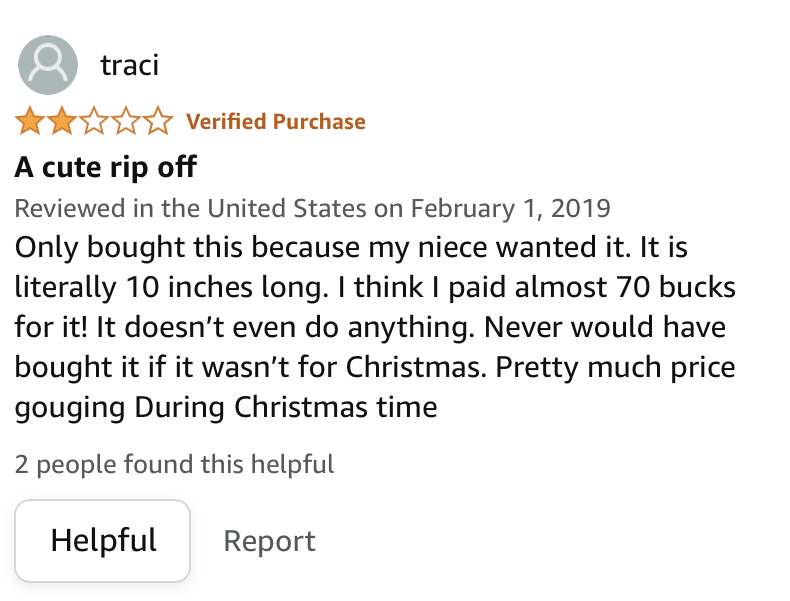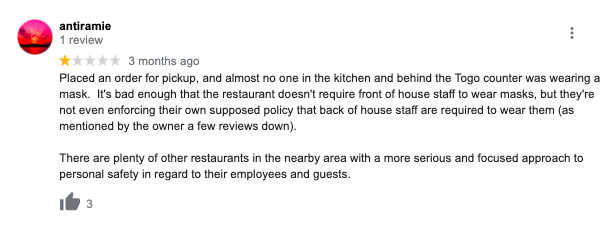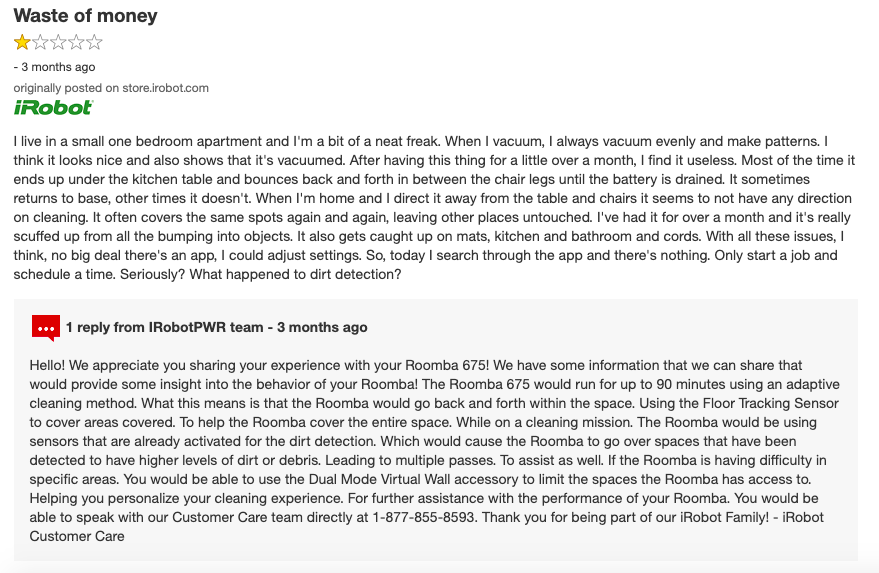How Quickly Should You Respond to Reviews?

The ongoing global health crisis has had a significant impact on consumer behavior. Consumers are not only shopping online more, they’re also using online channels to access customer service. In fact, according to Salesforce’s most recent State of Service report, 87% of service professionals indicate that customers have increased their use of digital channels during the pandemic.
One of the digital channels consumers use to get service is reviews.
Why Respond to Positive and Negative Reviews?
Here at 1440, we talk a lot about the importance of responding to reviews for products, apps and locations. That’s because responding to reviews (when a platform allows it) is such an important way to manage your reputation — and boost your bottom line.
When you respond to a negative review, you have the power to rebuild trust and win back a customer. Salesforce data tells us that over three-quarters of consumers will forgive a company for a mistake after receiving excellent service. What’s more, future shoppers will see your response, which will positively impact their perception of your company.
And when you respond to positive reviews, you have the opportunity to boost customer loyalty (and drive sales).
It’s important to note, though, that not all platforms offer the same capabilities when it comes to responding to reviews. For example, as of this writing, Amazon has removed the ability for brands to respond to customer reviews (though a new solution to engage with reviewers is in the works — stay tuned!). And while brands can respond to reviews written on Walmart.com, these responses aren’t displayed publicly; only the reviewer sees the response.
That said, there are still many places where review responses are allowed and public. Examples include Bazaarvoice, Yotpo, PowerReviews TrustPilot, GoogleMyBusiness, the Apple App Store and the Google Play Store.
How Quickly to Respond to Customer Reviews
One of the questions we get most often here at 1440 is “How quickly do I need to respond to reviews?”. It’s certainly an important question, but there’s no hard and fast answer. Generally speaking, the quicker you can respond, the better.
Here’s the thing: today’s consumers have high expectations. And 58% say the pandemic has actually raised their standards for customer service. To meet (and exceed) these heightened expectations, many customer-centric brands have made it a goal to respond to customer reviews and Q&A in real-time.
This might seem like a nearly impossible feat — especially if customers write reviews for your products through a number of different channels (such as your own dot com, a network of retail partners and Amazon) and you collect reviews for your company, apps and locations on other review sites.
But it’s actually very much possible — if you partner with the right providers.
Let’s say, for example, you’re a brand that uses Bazaarvoice, a 1440 partner, to collect and respond to reviews on your own eCommerce site. You can also respond to reviews for your products written on a network of retailer sites — including Walmart, Target and Best Buy, just to name a few. But you also sell your products on Amazon and regularly generate reviews for your apps and locations on a variety of other sites. If you’re also a Reputation Studio customer, you can manage and respond to all of these different types of reviews from one central location. And because you’re not forced to log in to a dozen or more dashboards, it’s much easier to provide fast responses.
6 Factors to Consider When Determining How Quickly to Respond to a Customer Review
Aiming to respond to reviews in real-time is a great goal. But in reality, not every single review requires an immediate response. When determining how quickly you should respond to a given review, consider these three factors.
1. Star Rating
A one or two-star review usually means you have an unhappy customer on your hands. For example, this shopper bought a planter — and wrote a one-star review because the item was damaged. In order to fix this situation and restore trust, it’s imperative that the retailer respond quickly.

On the other hand, this customer wrote a four star-review for the same planter. This review doesn’t require a speedy response.

As a general rule, negative reviews (one and two stars) require faster responses than neutral (three stars) or positive (four or five stars). If you’re a Reputation Studio customer, you can get alerts anytime you receive a review that falls below a certain star rating. That way, your teams can look into the customer’s issue and respond as quickly as possible with a resolution.
2. Review Sentiment
Star rating is important. But it doesn’t tell the whole story. That’s why it’s also important to measure the sentiment of a review (in other words, how a customer feels about your brand, product, app or location) when deciding how quickly to respond.
A one or two-star review could actually be very positive. For example, this customer purchased a children’s mattress and submitted a two-star review. Judging by the star rating alone, it’s a negative review. But when you read the actual review, it’s quite positive. The reviewer raves about the product itself as well as the brand’s customer service team.

Here’s another example. This reviewer wrote a two-star review for a bean bag chair. Again, at first glance, it could easily be mistaken as a negative review. But a closer look tells us this review actually has very positive sentiment.

In both of these cases, an urgent response isn’t necessary.
On the other hand, a positive (4 or 5-star review) can actually be negative. For example, this consumer wrote a four-star review for a restaurant. But the text of the review is actually quite negative. In order to make things right, this restaurant should provide a timely response to the review.

Reviews with negative sentiment require faster responses than those with positive sentiment. Why? Because reviews with negative sentiment have the potential to do more damage to your reputation.
But how can you understand the sentiment for each review — especially when you generate a high volume of reviews for your brand, products, locations and mobile apps? If you’re a Reputation Studio customer, you have access to rich analytics that allow you to easily determine the sentiment of reviews. And that way, you can quickly identify the ones that require the most immediate responses.
3. Review Content
Sometimes, a negative review simply reflects the tastes of the individual consumer. For example, this reviewer left a one-star review (with negative sentiment) for a perfume. Her biggest gripe is that she didn’t like the scent. However, the product has an average star rating of 4.8 and over 700 reviews — so clearly, there are others who like it. This review warrants a response — perhaps to help the customer find a fragrance that better suits her — but a real-time response isn’t necessary.

Here’s another example of a two-star review that isn’t urgent. The shopper’s chief complaint is that the item was expensive…but clearly, the cost didn’t prevent her from purchasing it. This review would warrant a response (if Amazon allowed responses) — but not an immediate one.

However, there are other types of negative reviews that require much speedier responses.
4. Reviews that Mention Health and Safety Concerns
Negative reviews that mention health and safety concerns should get top priority — and very fast responses. For example, this one-star review for a hair styling gel says the customer experienced chemical burns and hair loss after using the product. In order to protect its customers (and its reputation), it’s critical for the brand to respond quickly.

Here’s another example. This review for a restaurant indicates the establishment isn’t following COVID-19 safety protocols. Again, a speedy response is required to keep customers (and the restaurant’s reputation) safe.

5. Reviews that Mention Broken or Defective Merchandise
Brands should also respond quickly to reviews that mention damaged or defective items — like the review below that mentions the bed in question arrived “damaged in several areas.” A timely response will help the review writer resolve their issue (in this case, get a new bed). What’s more, seeing the response will show future shoppers that the brand stands behind its products and supports its customers — even after the sale.

6. Reviews that Suggest Products are Being Used Incorrectly
Sometimes, a review indicates that a shopper isn’t using a product correctly. And as a result, they’re having a bad experience. It’s important to respond to these reviews quickly to offer helpful tips to improve the shopper’s experience — and avoid an unnecessary return.
For example, this reviewer wrote a one-star review for her robot vacuum cleaner, listing some specific issues she’s had with the machine. The brand quickly responded with some helpful tips which will ideally help ensure the customer has a better experience with the vacuum — and doesn’t return it.

There’s no doubt it’s challenging to constantly monitor different types of negative reviews — and determine how quickly to respond to each. But if you’re a Reputation Studio customer, you can set alerts for certain negative keywords of your choosing. For example, if you operate a chain of restaurants, you might set alerts for words like “COVID,” “coronavirus” and “mask.” Then, you’ll get notified any time a review is submitted that contains one of those problematic keywords. And you’ll be better equipped to prioritize the reviews that require the fastest responses.
When it Comes to Responding to Reviews, Time is of the Essence
Today’s consumers have higher expectations than ever before. And when their expectations aren’t met, you risk losing them for good.
As such, it’s key to provide timely responses to the reviews your customers write for your brand, products, locations and mobile apps. When you partner with a reputation management platform like Reputation Studio, it’s a whole lot easier to achieve that goal.